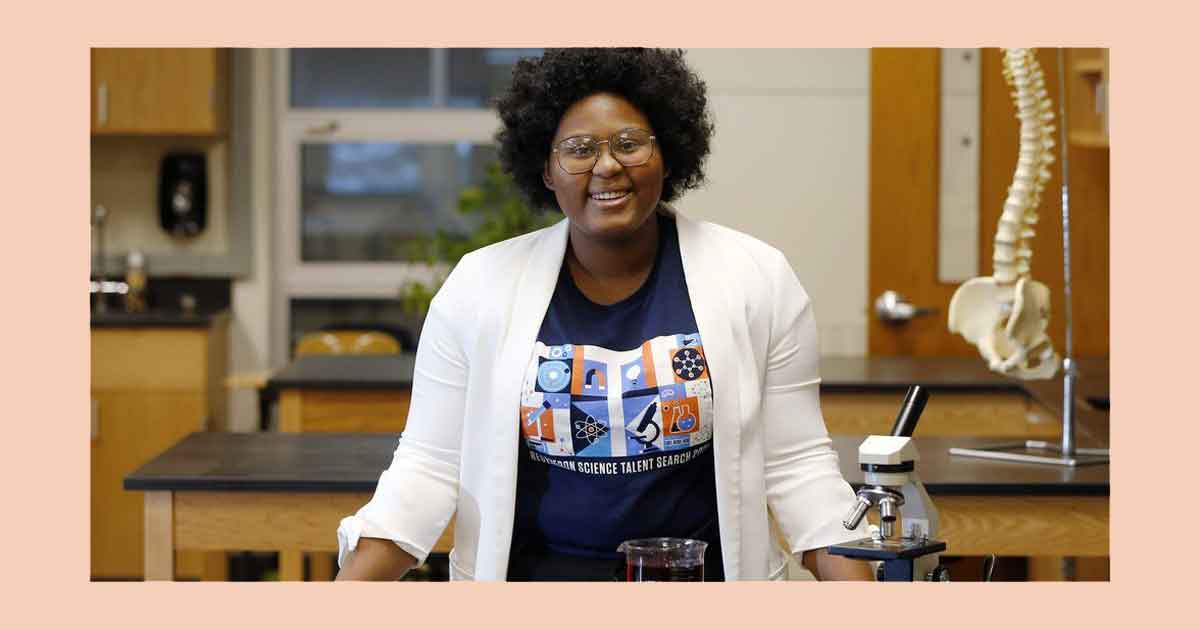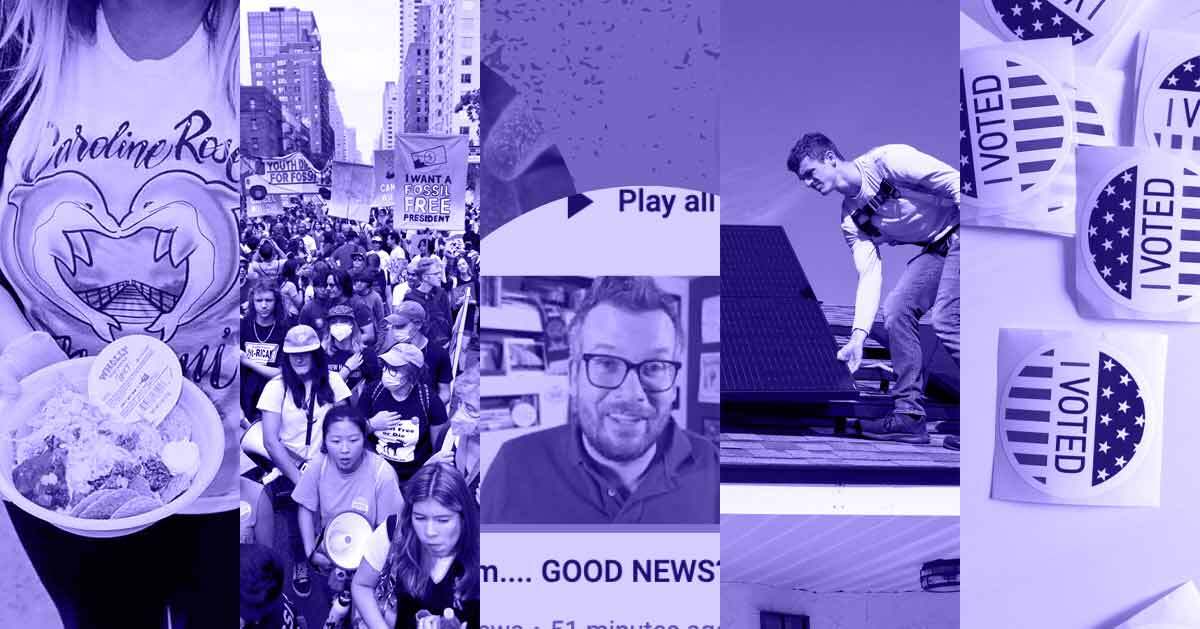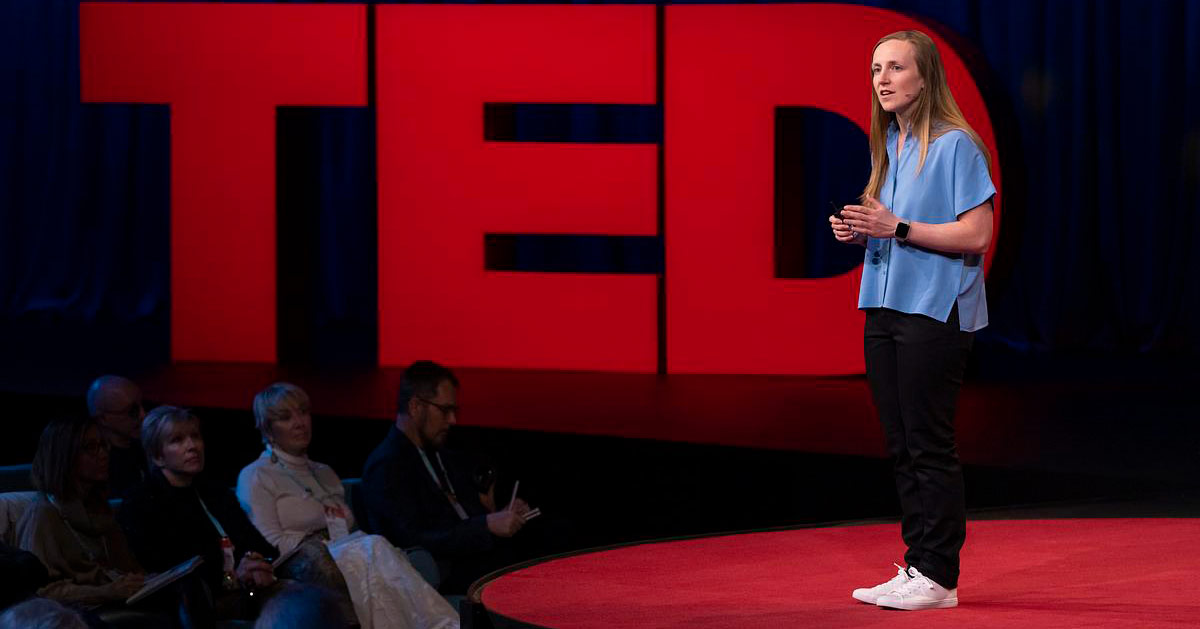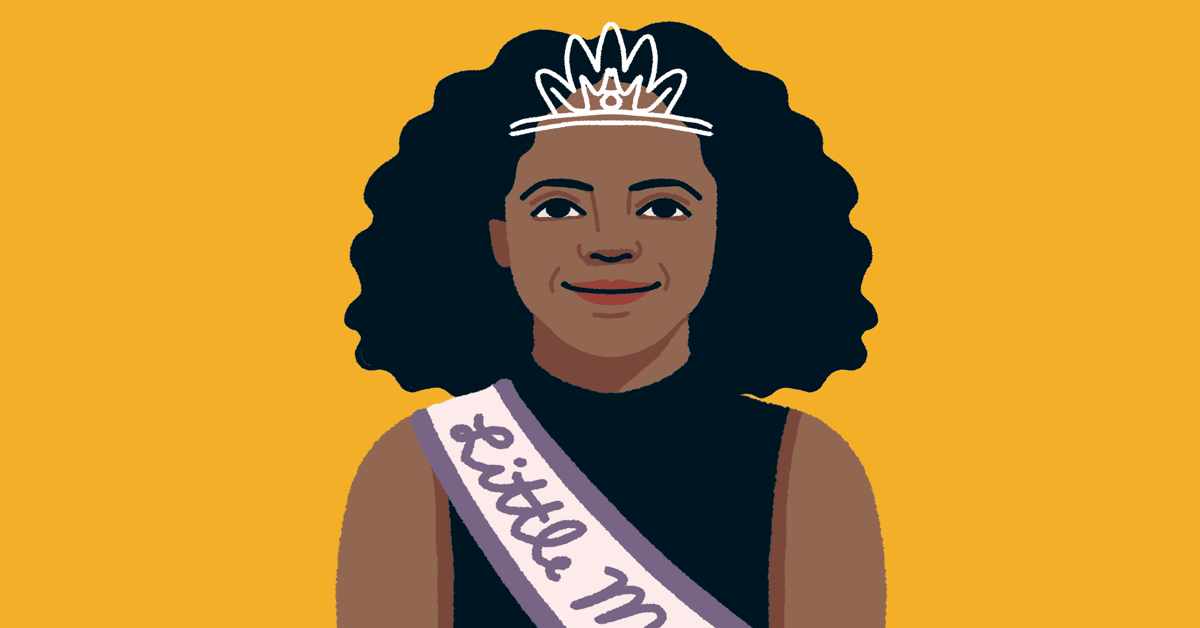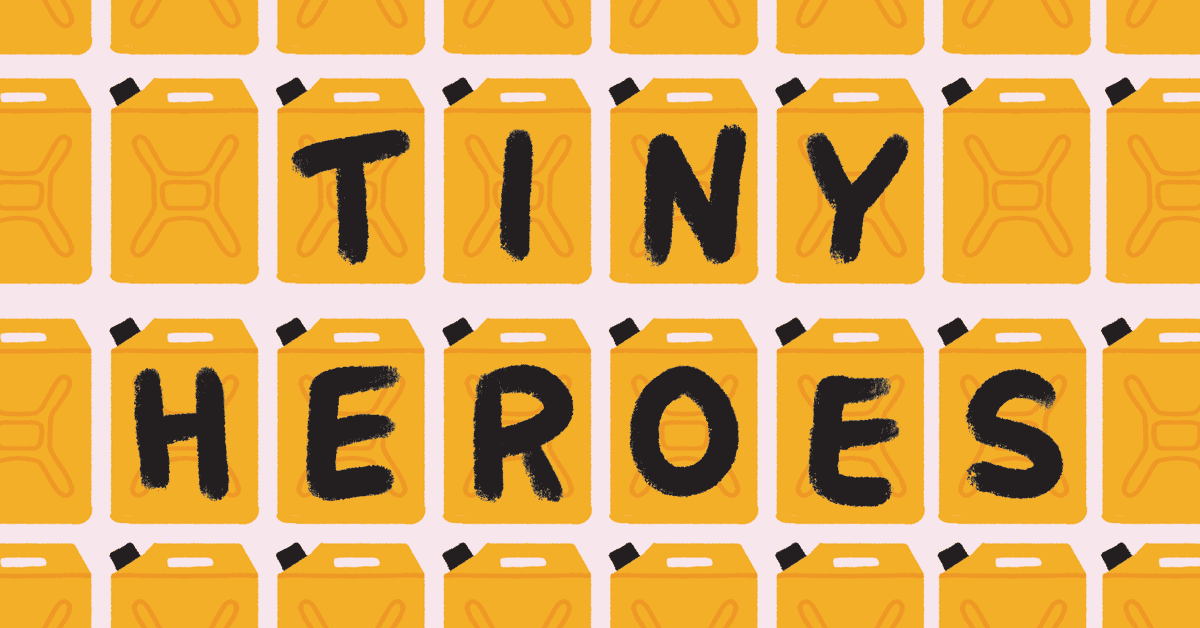Get to know these inspirational young people who are changing the world
There are a lot of things that fill us with hope for the future: Technology, science, ethical and accountable leaders, nonprofits, and even mission-driven corporations committed to doing good. But there are few things that give us more hope for the future than young people.
In the age of information and technology, young people come face-to-face daily with problems not of their own making: climate change, injustices, student loan debt, mental health stigma, corrupt leaders and corporations, and more.
And yet, in the face of those problems — perhaps more than any other generation — they've committed to working towards solutions. They're fighting for action on climate change, equitable access to technology in schools, environmental justice, creating medical technologies, companies, and nonprofit organizations to meet needs in their own communities. They're fighting polarization and misinformation, and advocating for equal rights for all.
We're inspired every day by them — and we hope these stories leave you feeling invited into the good work they're doing, too.
A 12-year-old in New York City is making sure students in need have laptops for remote learning through the pandemic
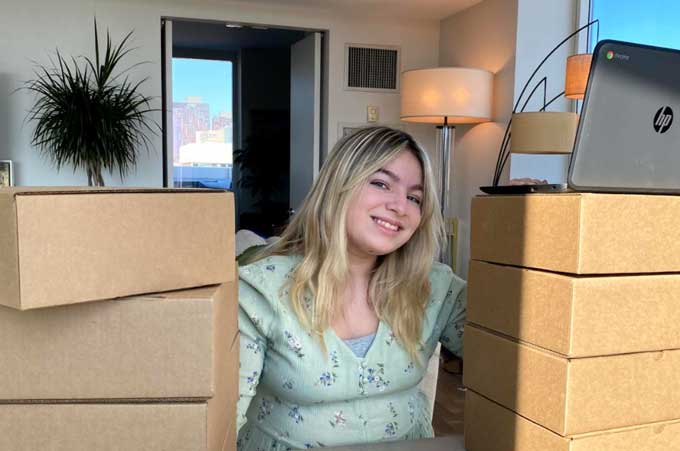
12-year-old Daisy Hampton founded an organization in New York City called Including You which aims to be "as inclusive as possible" by creating a space where students from all backgrounds could laugh and learn together.
And when the pandemic hit, and especially when New York City schools returned to remote learning, inclusion looked like closing the digital divide so many students (all over the country!) experience.
She got to work collecting donations for laptops and hot spots for students in need. According to her GoFundMe page, so far she's donated 250 devices and raised more than $16,000. She also has a waiting list of teachers who have reached out to her for help with their own students — and Daisy wants to help as many of them as possible.
Helpers like Daisy inspire us to #BeTheGood — right where we are, with whatever the need around us is. And we're hopeful for the day when all students, regardless of background or income, can have all the tools they need to participate in school.
A group of high school students started a dog rescue club to collect supplies for rescue centers and advocate for adoption
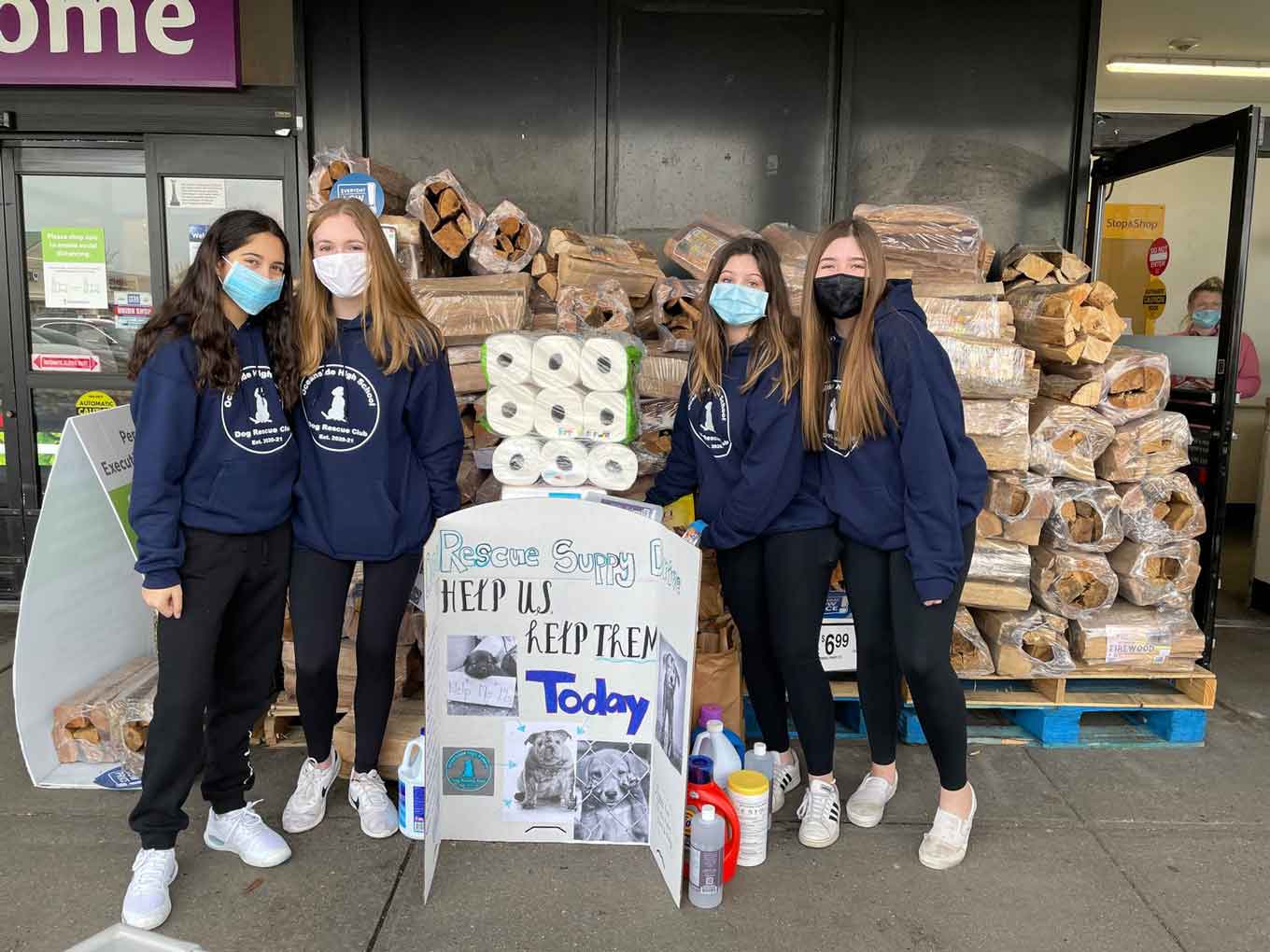
Four high school students in the Baldwin, New York area launched a dog rescue club to help support local nonprofit dog rescue centers — and create good news for dogs. They collect supplies like linens and cleaning supplies to donate to the rescue centers, and advocate for fostering and adopting rescue dogs.
The club specifically focuses on supporting rescue centers, as they're often run by volunteers, and funded by donations only. They also keep dogs until they're adopted, and sometimes even rescue dogs from shelters.
So far, they've held 2 donation drives: at the first, they collected more than $2,500 worth of cleaning supplies; and at the second, 60 bags of linens and blankets, which were then donated to five local rescue centers.
Once it's safe, the girls plan to host donation drives and fundraisers monthly at school, too!
A new study found that most young people would support a friend who came out as transgender
A new study found that almost all young people would support a friend if they came out as transgender.
Just Like Us, an LGBTQ+ youth charity based in the United Kingdom, surveyed youth from the ages of 11 to 18 in 375 schools and colleges.
Of the 2,934 pre-teens and teens surveyed, 39% identified as LGBTQ+ and:
— 84% of all respondents reported they would support their close friends if they came out to them as transgender
— 96% of LGBTQ+ respondents said they would be supportive, and 76% of those not identifying as LGBTQ said the same.
More than half of the respondents, 57% added that they already have a friend or peer who is trans.
And when asked if they believed their teachers would be supportive of a trans student when they came out, about 76% said they do.
“We are really glad that, with this independent research, we are able to shine a light on the opinions of young people themselves and how supportive they are of their trans peers,” Dominic Arnall, chief executive of Just Like Us, said in a statement.
We originally wrote this on International Day Against Homophobia, Transphobia, and Biphobia, and we acknowledge that these statistics aren't true everywhere. We wanted to share them to celebrate that change is possible, and that while the fight against homophobia, transphobia, and biphobia isn't over, we have a lot of progress and hope to celebrate, too.
When we can imagine a better, more inclusive and accepting future, we can then work to keep building it.
Learn how to support LGBTQ+ youth in our ultimate guide.
Concerned by the rise in reports of domestic violence during the pandemic, a Polish teenager made a fake online cosmetics shop for victims to secretly ask for help
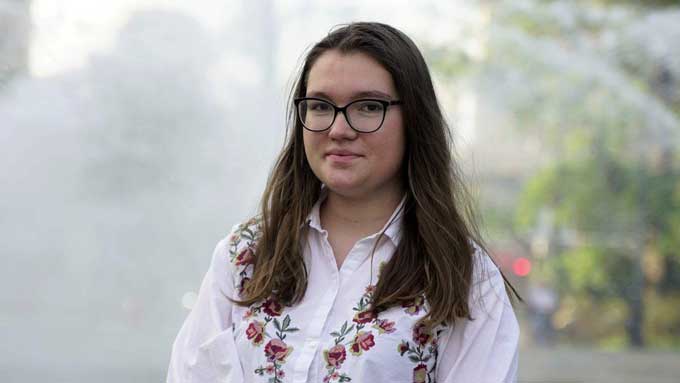
Krystyna Paszko, a high school student in Poland, heard about the rising reports of domestic violence during the pandemic. She also heard about a French initiative where people can go to the pharmacist and ask for a special mask, which alerts them that they are a victim of domestic violence.
And after hearing about the rise in reports of domestic violence during the pandemic, she wanted to do something to help victims, too.
She set up a fake online cosmetics shop that victims can use at home to request help while appearing to be shopping online. When they open a chat, they're connected with a psychologist rather than a salesperson. And if they place an order with their address, it's really requesting authorities come to their home.
When she shared her idea on Facebook, the response and interest was huge, and it lead her to reach out to a Polish organization, the Women's Rights Centre, which offered psychologists and lawyers to help respond to requests on the website. Her idea also won a €10,000 (about $12,000) grant from the European Union.
Since it launched, more than 350 people have contacted the website. Most of the victims are under 40 years old.
An Iowa high school student invented suture thread that changes color when it detects an infection
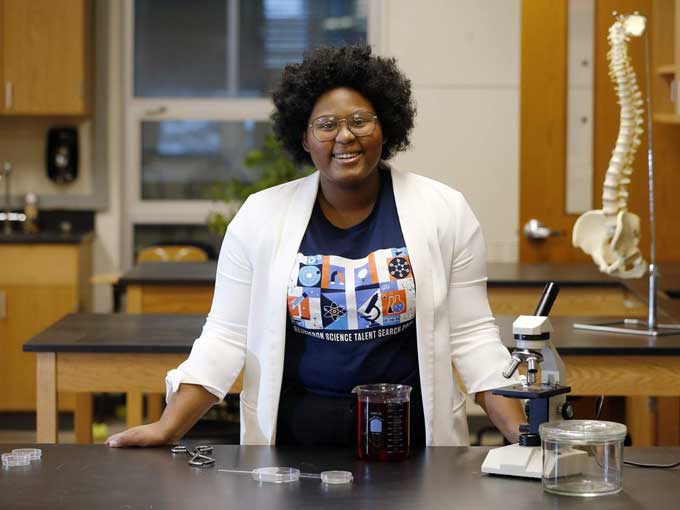
Dasia Taylor, a 17-year-old high school student in Iowa City, Iowa invented suture thread that changes color when it detects infection in a would.
She's already won numerous science fair awards for her invention, and in January was named one of 40 finalists in the Regeneron Science Talent Search, the oldest science and math competition in the U.S. for high school seniors.
Sutures coated with a conductive material that can sense changes in a wound and send signals to a doctor or patient's smartphone exist, but Taylor knew this expensive tech wouldn't be an accessible option for developing countries where internet and technology is more lacking.
And those countries need a solution, too. According to the WHO, 11% of surgical wounds develop an infection in low- and middle-incoming countries (in the U.S., it's between 2-4%).
Taylor was specifically intrigued by the statistics around infection after Cesarean sections. In some African nations, up to 20% of women who give birth by C-section develop a surgical site infection (in the U.S., it's 8-10%).
She also has a history of doing racial equity work in her community. So, seeing that problem, and with a perspective working toward equity — she got to work on her invention.
Healthy human skin is naturally acidic, with a pH around 5 — but when a wound is infected, its pH goes up to around 9. Changes in pH don't need to be detected with electronics — many fruits and vegetables will do the trick.
And that's exactly what Taylor used — beets, specifically.
“I found that beets changed color at the perfect pH point,” says Taylor. Bright red beet juice turns dark purple at a pH of nine. “That's perfect for an infected wound. And so, I was like, ‘Oh, okay. So beets is where it's at.’”
When she's not creating life-saving tech, and before the pandemic shut down many meetings, Taylor also attended weekly school board and district meetings to advocate for anti-racist curriculum.
She hopes the sutures will help patients and doctors detect infections as early as possible, so they can get medical attention when it has the most impact.
A 9-year-old girl’s simple act of kindness to help a neighbor during the pandemic turned into a grocery delivery network made up of 6,000 volunteers
Hana Fatima's small pandemic gesture snowballed into a volunteer delivery network called the Good Neighbour Project.
While shopping with her father at an Ontario grocery store in the early days of the COVID-19 pandemic, Fatima noticed an elderly woman in the check-out line struggling with her groceries. She and her father offered to help carry her purchases to her car, and she had an idea to help others.
Fatima and her father shared their number with a few elderly neighbors. The idea was that those who needed help could provide them with a list of items that they would purchase so those most at risk didn't have to be exposed to the virus in crowded stores.
They shared the idea with a few friends, and her father started a Facebook group to coordinate with others who wanted to help. Word spread, and within hours there were hundreds of people volunteering to do the same thing in their communities.
More than a year later, the project — called the Good Neighbour Project — has 6,000 volunteers who speak more than 30 languages with chapters in Toronto, London, and Ottawa.
Those who need assistance accessing groceries, essential supplies, and medication are connected via the Good Neighbour Hotline with a person who is able to purchase and deliver the items. The person making the request pays only for the cost of the groceries — delivery is free.
Since launching, the group has made more than 9,000 deliveries for vulnerable people including seniors, people with special needs, people who are pregnant, single parents, and others.
"When I saw the elderly person, I thought that was my opportunity to go and help somebody," Fatima said. "Because whenever you get a chance to be helpful and kind, just go and do it without thinking about it. Everybody should do that. You see an opportunity? Somebody needs help? Just go and do it."
Frustrated that her city didn’t have one, a college student founded New Orleans’ first glass recycling plant
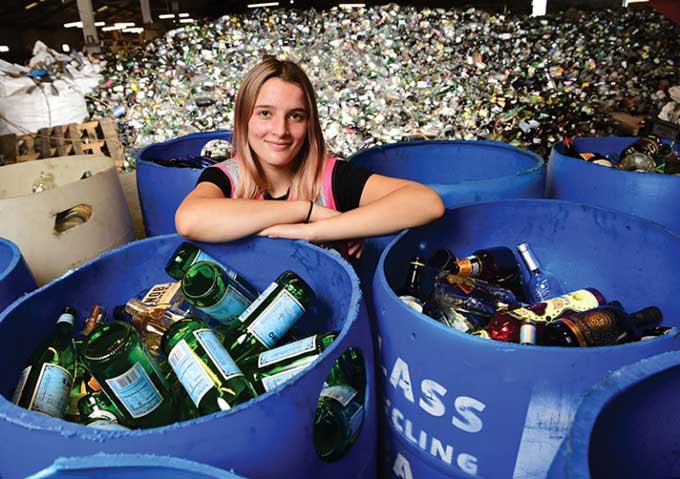
Franziska Trautmann was at the end of her college career when her frustration at her city’s (New Orleans, Louisiana) lack of a recycling program for glass boiled over.
Rather than just stewing on it, she jumped into action and created the solution that she wanted to see — with the help of her friends, Franziska set out to change her city for the better with her company, Glass Half Full.
Today, Glass Half Full is a company that collects glass in New Orleans and converts it to beach-like sand and glass cullet which is then used for disaster relief, eco-construction, new glass products, and so many other things.
Glass Half Full reimagines recycling — and they collect all this glass for free with the help of volunteers too.
To combat polarization, this high school student created an organization that helps young people get politically engaged
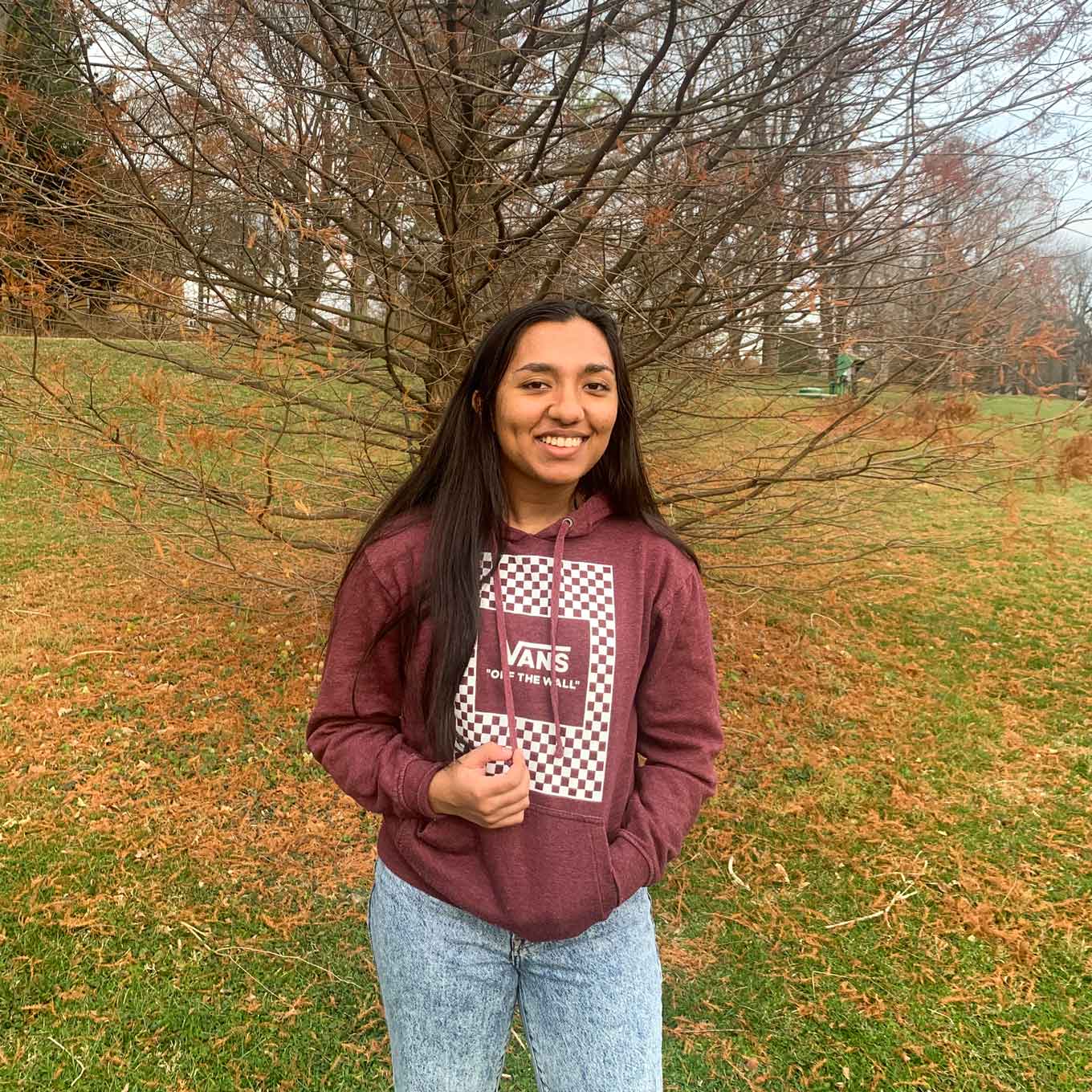
Approximately 70% of high school seniors say that they don’t align with a political party. For Shreya Joshi, this meant an opportunity to get her peers involved in civic engagement.
As a rising high school sophomore, Shreya — who is now a high school senior — created a series of five workshops to begin teaching students about local politics.
Now, Shreya is the founder and executive director of Project Teal, a “student-led movement to revitalize democracy.”
Project TEAL — which stands for Tolerance, Engagement, Action, and Learning — was first motivated by the political polarization Shreya noticed around her.
“Twitter feuds, name-calling, just a general unwillingness to listen to the other side of the political aisle has become an everyday normality,” she told Good Good Good. “We rarely take time to have a conversation with someone on the other side of the aisle or someone who might not have the same opinion as them.”
→ Read more "best of" good news stories.
- LGBTQ+ Good News Stories
- Coronavirus Good News
- Good News Stories About Climate Change
- 4 Ways the World Is Changing for the Better
- The Best Pieces of Positive Political News
- Best Good News in Global Health
- Good Animal News Stories
- The Best Good News in Sports
- Positive Mental Health News Stories
- Best Refugee & Immigration Good News Stories
